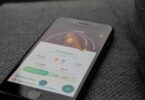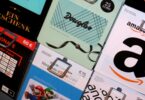While store brands do offer convenient sparkling waters, they lack that truly satisfying crispness that making your water at home provides.
On a hot summer afternoon, nothing refreshes quite like an ice-cold glass of bubbly water.
The light effervescence seems to awaken the senses and energize the soul.
With a basic setup and a little practice, you can turn ordinary tap water into a lively elixir rivaling any bottled variety.
With just a carbonation device and water bottles, you’ll soon wonder why you ever bought bubbly in stores before.
You’ll love having a never-ending supply always chilled and waiting in the fridge.
Once you experience the refreshing rewards of sparkling your own H2O, flat water just won’t do anymore.
You can dress up plain servings with fruits or herbs to wake up cocktails as well.
Use this guide to learn how to easily make water sparkling.
Read Also: 20 Best Virtual Business Address Services in Florida [Reviewed & Ranked]
How to Make Water Sparkling
Here are simple steps so you too can create customized sparkling servings whenever the desire strikes:
The Equipment You Will Need
To carbonate water at home, you’ll need a few pieces of gear. The most important is a soda maker or carbonation device. Countertop models can be purchased for less than $100.
Look for ones that allow you to adjust carbonation levels to your taste.
You’ll also want some carbon dioxide cartridges or tanks to inject the CO2 into the water.
Reusable bottles made of thick glass or PET plastic are ideal for holding pressurized sparkling water.
Be sure they can withstand carbonation without exploding!
The Ingredients Needed
Making sparkling water is remarkably simple ingredients-wise. All you need is plain water and carbon dioxide gas.
Distilled or purified water works best as it lacks minerals that could impact carbonation. You can carbonate tap water but it may not taste as crisp.
Carbon dioxide is the magic ingredient that gives bubbly its effervescent character.
It dissolves into the water under pressure, forming tiny carbonic acid particles and carbon dioxide bubbles.
The Process
Follow the directions that come with your carbonation device but generally:
Chill still/flat water bottles in the fridge or freezer overnight. Cold water absorbs more carbon dioxide.
Fill bottles only 3/4 full to allow for expansion during carbonation. Screw caps on tightly.
Attach filled bottles to the carbonation device and insert the required number of CO2 cartridges/canisters.
Pressurize according to the manufacturer’s instructions, usually 30-60 psi.
Gently shake bottles to evenly distribute bubbles before opening them. Enjoy!
Read Also: Linkedin Job Slots vs. Job Posts: Which Are the Best
Conclusion
With just a small initial investment and basic supplies, making carbonated water at home is simple and cost-effective.
Now you can have crisp, refreshing sparkling water whenever a craving strikes without all the added sugars and chemicals of store-bought varieties.
Just be sure to use quality equipment and follow directions carefully to safely carbonate plain H2O into a bubbly beverage perfect for plain sipping or sprucing up cocktails and other summery drinks.
Frequently Asked Questions
How Long Will Carbonated Water Stay Sparkling?
Once carbonated, home-brewed sparkling water should retain its fizz for 3-4 days if stored chilled in the refrigerator.
Be sure bottles have an airtight seal to prevent gases from escaping prematurely.
Can I Reuse the Same Bottles?
Yes, as long as bottles are rated for carbonation/resealing you can refill and carbonate them multiple times.
Be very careful cleaning plastic as any nicks could cause leakage over repeated pressurizing. Thoroughly rinse bottles to remove all soap residue before filling.
How Can I Adjust Carbonation Levels?
The amount of CO2 added determines bubbles. 1 cartridge is lightly carbonated, 2 is moderately bubbly, and 3 is very fizzy.
You can also control levels by varying carbonation time – the longer bottles sit under pressure, the more CO2 is absorbed. Start with less time/CO2 and adjust to your preferences.
What if My Water Loses Its Sparkle Quickly?
Common causes of flat water are inadequate sealing, overfilling bottles before capping, using warm water that doesn’t hold gas as well, or not shaking bottles post-carbonation to incorporate bubbles uniformly.
Be sure to follow manufacturer directions precisely for best results.
Is Carbonated Water Healthier Than Soda?
While bubbly water contains no calories, sugar, or artificial sweeteners like soda, it’s not necessarily healthier either.
The carbonation process produces small amounts of carbonic acid which can impact tooth enamel and digestive health if consumed in large volumes daily.
Still, it’s considered a better beverage choice than pop if you enjoy the lightly effervescent experience of sparkling water.






